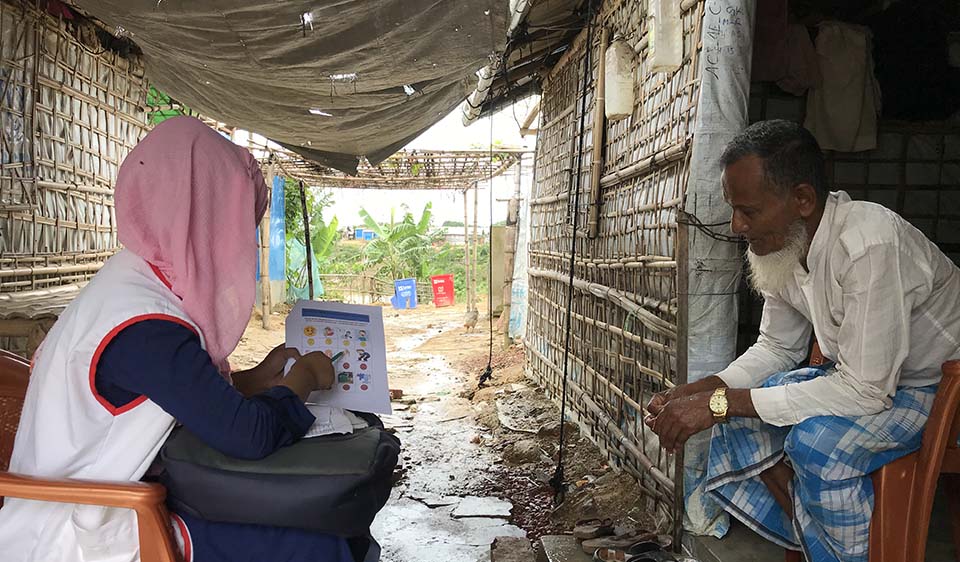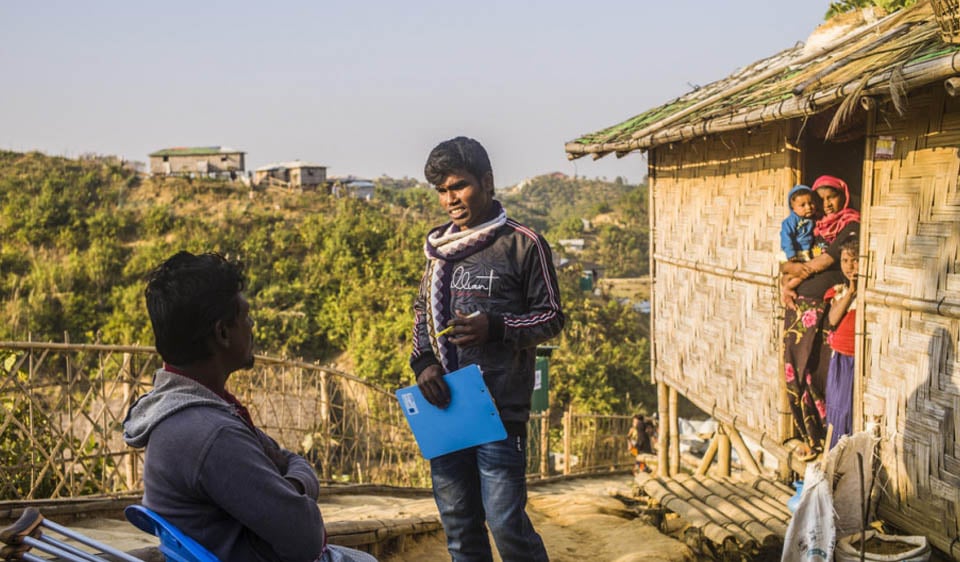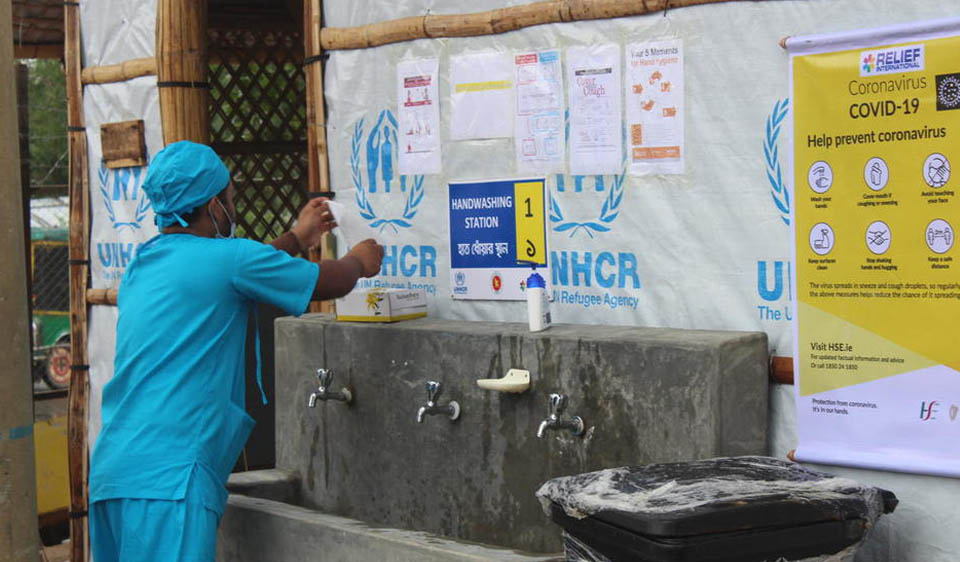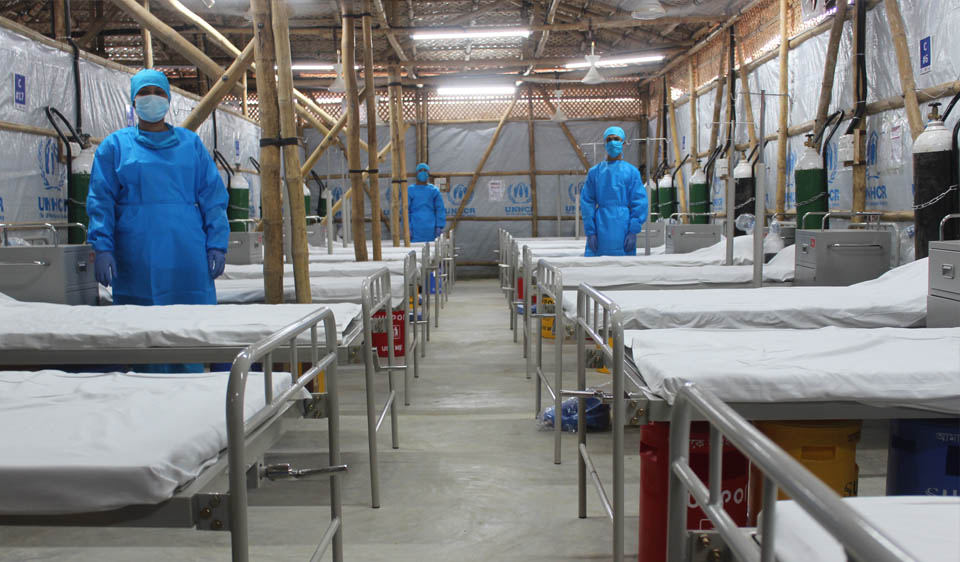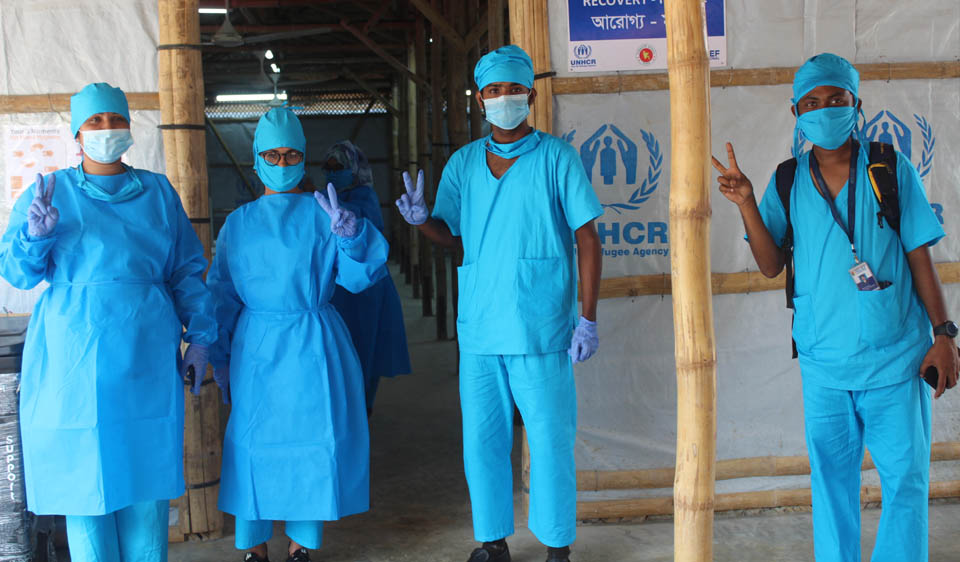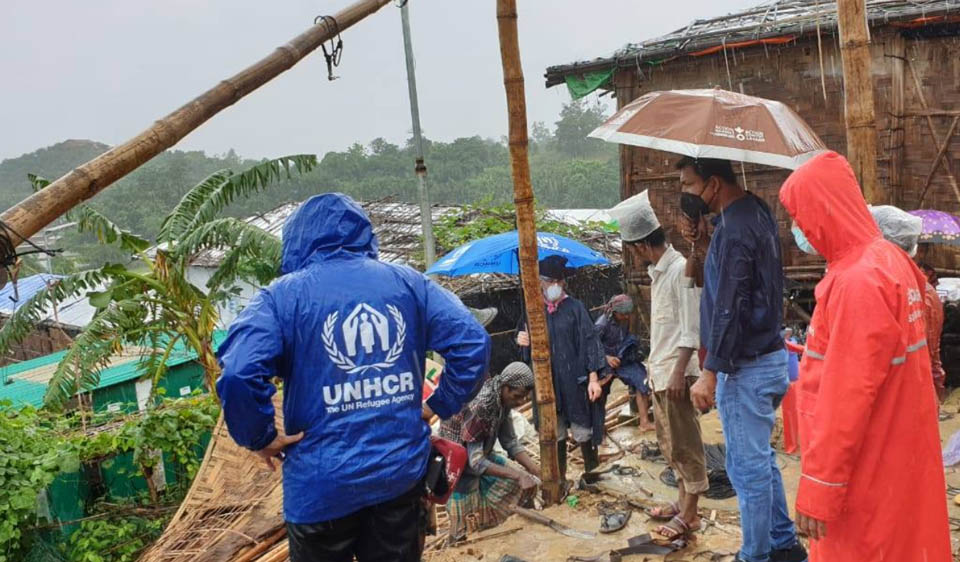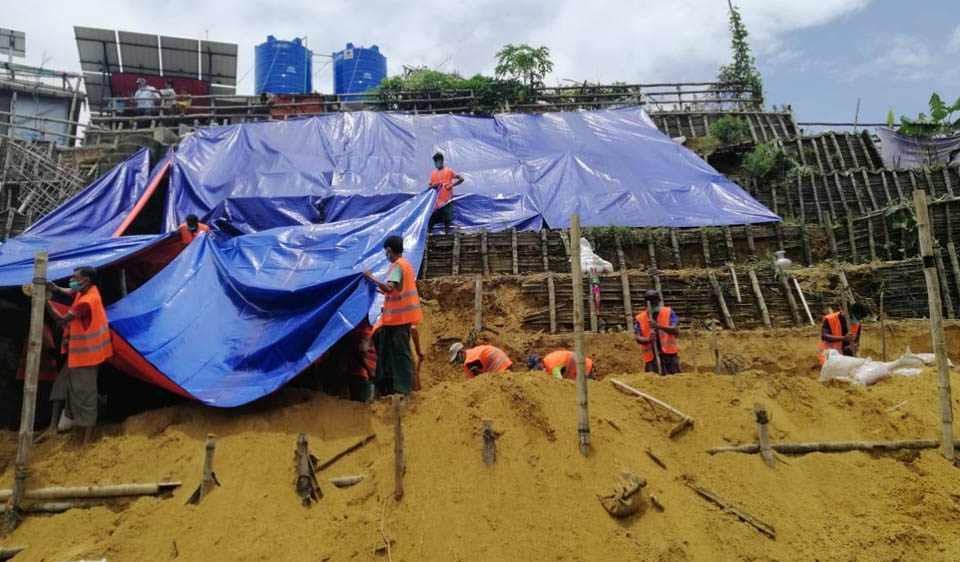Rohingya Refugees Lead Response as Bangladesh Camps Face COVID-19 and the Monsoon Season
As the most vulnerable in Bangladesh face emergency on top of emergency, UNHCR continues to deliver aid and provide services in increasingly challenging conditions. At the forefront of this response are the refugees themselves.
At the forefront of emergency preparedness and response in Bangladesh are refugee volunteers. 2.6 million Bangladeshis and some 860,000 Rohingya refugees live in Cox’s Bazar, Bangladesh, facing the double threat of COVID-19 and the monsoon season.
UNHCR continues to deliver aid and provide services in Bangladesh. Refugees are at the centre of preparedness planning and response; however, their role has become even more critical during the COVID-19 pandemic, with an 80 per cent reduction of humanitarian actors in the camps in order to reduce the risk of further transmission of the virus. Teams of some 3,000 trained volunteer first responders have been leading their own communities and ensuring life-saving measures.
“People tell us that they are scared. They have heard how dangerous the disease is and also that many people around the world are dying,” says Saidul Karim, one of the Rohingya refugees trained to go door-to-door to share information about health and hygiene, look out for signs of illness, record births and deaths, and act as a critical bridge between refugee communities and health facilities.
Like Saidul, Salma spends her days going shelter to shelter to check up on her community. They are among 1,440 community health workers trained by UNHCR and WHO. They visit hundreds of households every week and send suspected cases for testing and treatment.
Community outreach volunteers are vital in getting information to refugees living in camps in Bangladesh – including why it’s important to get tested, and how to prevent the further spread of the disease.
“Every household is at a risk
|
|
Furthermore, UNHCR has adopted a community-led approach whereby refugees select the areas of highest importance to them. UNHCR provides them with materials and resources and they implement the priority activities. This is also essential to reduce the presence of humanitarian actors in the camps during the COVID-19 pandemic.
UNHCR and partners are also working to provide support to the Government of Bangladesh to combat COVID-19 by enhancing capacity to respond to the health needs of both the host community and refugees.
Emergency response and monsoon preparedness
Bangladesh has been experiencing exceptional levels of rainfall in the past weeks. Since the onset of the monsoon season at the beginning of June until now, almost 84,000 refugees have been affected by incidents including soil erosion and landslides, flooding, wind and storms. More than 7,600 people were forced to temporarily relocate due to shelter damage, while most returned to their shelters within a few days, following shelter repairs.
Refugee volunteers who are trained by UNHCR and partners are at the forefront of emergency response. They spread awareness about the risks brought by the weather and help families better protect themselves.
Emergency Response Teams have been deployed to assess the damage, to provide support to those families forced to temporarily relocate, to ensure shelter repairs and site improvements and to ensure access to services for all. Post-disaster kits and emergency relief items have been pre-positioned in case of emergency.
***
As Rohingya refugees face emergency on top of emergency, your help ensures that UNHCR can mitigate the spread of COVID-19 while responding to the onslaught of the monsoon season and ensuring that critical activities continue, including health, nutrition, hygiene promotion, construction of health facilities and WASH infrastructures as well as key distributions such as food, LPG and hygiene kits.
Share on Facebook Share on Twitter

